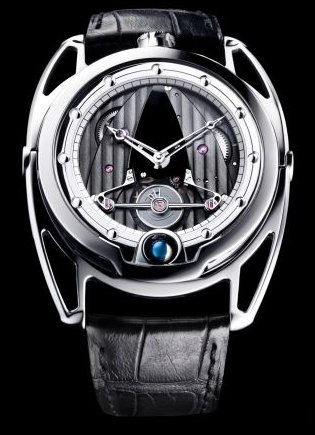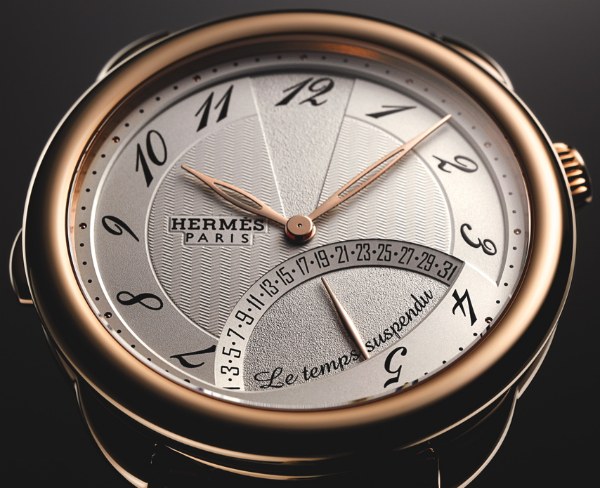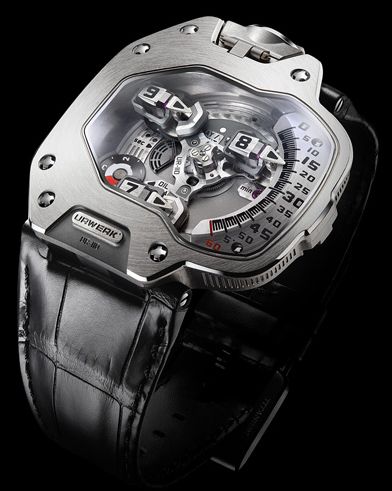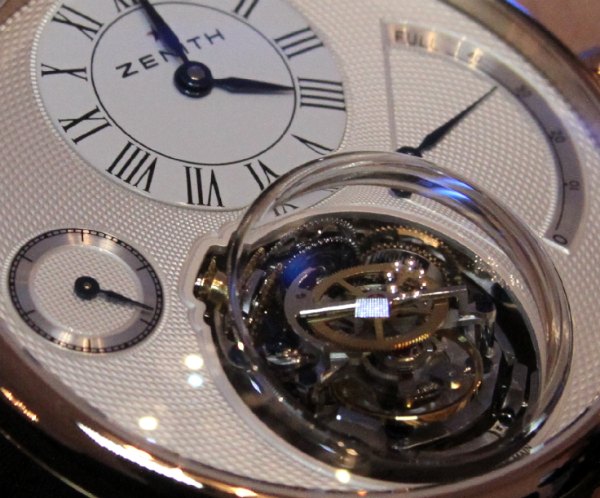 The following timepiece analysis post is by Chris Meisenzahl. He is a long-time watch enthusiast and daily Speedmaster Pro wearer. He blogs at The Pretense of Knowledge and can be followed on Twitter at http://twitter.com/speedmaster.
The following timepiece analysis post is by Chris Meisenzahl. He is a long-time watch enthusiast and daily Speedmaster Pro wearer. He blogs at The Pretense of Knowledge and can be followed on Twitter at http://twitter.com/speedmaster.
I remember several years ago I was part of a thread on one of the popular watch forums. I commented that it was too bad we weren’t alive during the 40s-60s, what I had considered the “Golden Age” of mechanical watches. It seemed like back then, of course, all watches were mechanical, and most seemed quite affordable, even considering inflation. But another poster quickly set me right. He pointed out that were were living in the Golden Age of mechanical watches right now! After a few moments of consideration I realized he was absolutely correct.
A strong argument could be made that we live in a Golden Age of mechanical watches now. We have the ultra-high-end brands such as MB&F, Patek, Lange, De Bethune, etc. We have independents such as Roger Smith, Parmigiani, Peter Speake-Marin, Kari Voutilainen, Richard Mille, and F.P. Journe. And this is all in addition to the usual suspects like Rolex, Omega, Jaeger-LeCoultre, and dozens of others. But for those without deep pockets there are still other options. A fan of mechanical watches can pick-up a Russian Vostok automatic for well under $100. And there are a seemingly limitless number of Seiko Diver options under $300 and Seiko 5 options for under $75. And don’t forget, the Vostok and Seiko (don’t forget Orient) automatics are true in-house movements, something that many of the mid-tier Swiss brands can only claim with their fingers crossed behind their backs and a wink.
Where I’m going with all of this is that the 2011 edition of the Grand Prix d’Horlogerie de Genève (sometimes known as the “Geneva Watchmaking Grand Prix”) awards were recently completed. This event is a kind of industry gathering at which the Swiss watch industry fetes its own. It’s not quite clear to me how much of the event is marketing self-promotion by the industry, and how much is more “pure.” Regardless, for us watch fans, it’s another opportunity to look at the products and manufactures we love.
The awards are chosen by a panel picked by, well, I’m not entirely sure how one gets chosen to be on the panel of judges. I can imagine a Swiss castle with Pascal Raffy at the gate, and puffs of white and black smoke coming out of a chimney as candidates are chosen [Ed. note – sounds like a scene from a bad FOX TV reality dating or cooking show].
“Created in 2001, and as of this year 2011 under the aegis of the Geneva Watchmaking Grand Prix Foundation, this event is intended to salute the excellence of worldwide horological production, and annually rewards the finest creations and the most important figures in the watchmaking world. It thereby contributes to promoting horology and its prime values – namely innovation …“
The 2011 Grand Prix d’Horlogerie de Genève Awards were held on November 19th. Cutting to the chase, the top award winner was the De Bethune DB28, which took home the coveted Aiguille d’Or award. As I’ve mentioned before, I think that De Bethune has the slickest looking moonphase complication. The brand is a breath of fresh air in a world of Rolex Submariner homages and the like. Not that I dislike the Sub, it’s just that it’s nice to see some different new designs. And the prizes are awarded in large part based on innovation, both technical and design.
“The international jury of this 11th edition, composed of watchmaking professionals, awarded the “Aiguille d’Or” Grand Prix, the supreme award honouring the best timepiece of the year, to the DB28 model by De Bethune.“
Let’s check out the DB28:
– titanium or rose gold
– hand-wound, as the finest of movements generally are
– 276 components, twin barrels
– 6 day power reserve
– 3D moonphase display
While the DB28 was the belle of the ball, there were other awards presented as well.

The Best Men’s Watch award went to the Hermès Arceau Le Temps Suspendu. I really didn’t expect this; most of us don’t think of Hermès when we think of fine Swiss/French watchmaking. Do read Ariel’s review of this watch from earlier in the year.
“The watch itself comes in a 43mm wide case in steel and as a limited edition of 174 pieces in 18k rose gold. The Arceau style case has a more pronounced lug structure on the top and suavely curved numerals that seem to run around the dial. … The retrograde date dial is surprisingly easy to read and I like how the hands seems to come out of nowhere. Inside the watch is an automatic mechanical movement with the special time suspended module that was specially developed for the watch.“

The Best Design Watch prize was awarded to one of my favorite brands, Urwerk, for their stunning UR-110.
Skipping the technical details, the UR-110 is yet another crazy-cool creation from the geniuses inside Urwerk. Similar to De Bethune, they continue to be iconoclasts and shake-up the watch industry. Urwerk describes this watch …
“The UR-110 indicates time by means of a revolving satellite complication on planetary gears featuring three parallel hour/minute modules resembling torpedoes. The time is displayed on the right side of the watch, with the satellites following a vertical line – 0 to 60 minutes – in a downward motion. The ingenuity of this layout lies in allowing the wearer to view the time discreetly and elegantly without the need to pull back a cuff.“
And one of the most slick features? The dial side Control Board features an “Oil Change” indicator to alert the user when it is time for a service. Amazing. The movement is automatic with 46 jewels and a single barrel. Urwerk again implements their air turbines as part of the winding system. Do not miss Ariel’s hands-on look at this watch with pics. And the official Urwerk video? Also worth your time.

The Best Complicated Watch Prize was awarded to Zenith for their amazing Academy Christophe Colomb Equation of Time. It’s good to see the Zenith ship back on a reasonable course after a major management shake-up and the sunset of the Theirry Nataf era. The Christophe Colomb is another over-the-top creation, and I love every bit of it. Admittedly, there might still be some good Nataf DNA in the toubillon of this piece, to his credit. At first glance it looks muck like the Jaeger-LeCoultre Gyrotourbillon. And given the bubble housing the complication, owners should be VERY mindful when going through doorways! 😉
Ariel’s review of this watch describes the make-up of the tourbillon: “An escapement on gimbals that moves around such that the escapement more or less is always placed the same position. … At the bottom of the “gear ball” is a polished gold weight that keeps the entire thing pointed in the right direction. … the “tourbillon” in the Christophe Colomb moves only with the power of gravity.”
The full list of winners:
– “Aiguille d’Or” Grand Prix: De Bethune, DB28
– Best Ladies’ Watch Prize: Boucheron, Crazy Jungle Hathi
– Best Men’s Watch Prize: Hermès, Arceau Le Temps Suspendu
– Best Design Watch Prize: Urwerk, UR-110
– Best Jewellery and Artistic Crafts Watch Prize: Van Cleef & Arpels, Lady Arpels Polar Landscape
– Best Complicated Watch Prize: Zenith, Academy Christophe Colomb Equation of Time
– Best Sports Watch Prize: TAG Heuer, Mikrotimer Flying 1000 Chronograph
– “Petite Aiguille” Prize (for models under CHF 5’000): Montblanc, Star Worldtime GMT Automatic
– Best Watchmaker Prize: Vianney Halter
– Special Jury Prize: Patek Philippe Museum
– Public Prize: Audemars Piguet, Millenary 4101
So what are the surprises here? There are three surprises for me:
- I must admit that I never would have expected to see anything from Hermès here, they’re definitely not one of the usual suspects.
- It was a bit of a surprise to see TAG Heuer represented here. They’re generally considered the high-end of the mall watch world, somewhat out of place with the rest of this group as a brand. TAG Heuer does do some cutting-edge work with technology, but not much of it seems to make it out of the lab (think Monaco V4 and belt drives)
- And rather conspicuous by their absence? Greubel Forsey, MB&F, and Harry Winston.
As an aside, I sometimes wonder if Rolex get’s too little credit for its slow but especially useful and practical innovations? The Parachrom hairspring for example? Though an innovation like that certainly isn’t flashy and has essentially no visual appeal.
And while I overall love the choices, I still find the Hermès choice a bit of a head-scratcher. It was selected over the Laurent Ferrier Galet Micro-rotor and the Vacheron Constantin Patrimony Traditionnelle World Time? I do wonder how much pressure, implicit or explicit, the judging panel is under to make their choices either popular or in-step with “approved” choices. When reading various watch magazines one wonders why we can go years without reading a bad review, and why excuses are often made for the occasional poor category rating. We of course wonder if the fear of offending an advertiser (current or potential) is the cause. I have no idea what forces are at play in these awards, but I think it would be naive to assume there are none at all.
Regardless of my nit-picky comments, awards and events like the Grand Prix d’Horlogerie de Genève are indeed fun for us watch enthusiasts. They keep us entertained throughout the year, hopefully holding us over until we get to start discussing Basel 2012 in just a couple months. 😉 And in addition to being good entertainment, they’re also good for customers. These kinds of events keep competitive pressure on the watch manufactures to continue to innovate and introduce new technologies and products. Customers win in the end.
